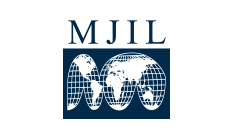Abstract
Among the greatest threats to global security is the slaughter of civilians. This is due to the inconsistent reaction of the international community to genocide and other atrocity crimes. Whether it was the slaughter of hundreds of thousands of Armenians in Turkey in 1915 or Rwandan Tutsis in 1994, mass murderers act with impunity when there is not a forceful response. Contrast these situations to Vietnam’s intervention in Cambodia in 1978 that put an end to the Khmer Rouge’s nightmarish killing fields, or the North Atlantic Treaty Organization’s (NATO) intervention in Kosovo in 1999 that protected ethnic Albanians from Serb brutality. Even though atrocities like these have been the hallmark of oppressive regimes throughout recorded history, they continue today in places like Syria partly as a result of the uncertain legality of the use of force to respond to these crimes. Strict interpretation of state sovereignty and the United Nation’s monopoly on authorizing force significantly limit effective response measures, allowing grotesque human rights violations to continue. In order to break the atrocity cycle, states must have the authority to use force to prevent and respond to atrocity crimes when the United Nations fails to act. A new strategy, led by the United States, is emerging in response to atrocity crimes. The doctrine of Mass Atrocity Response Operations (MARO) is developing as a result of several high-level reports and strategic publications highlighting the urgent need for more effective measures. Further support came on August 4, 2011, when President Barack Obama issued a presidential directive to create an interagency “Atrocities Prevention Board.” This interagency body is tasked with coordinating a government wide approach to preventing mass atrocities. Of the many possible actions that can be taken to prevent atrocity crimes, military action— noncombat or outright intervention—must be included as a key element to deter and suppress violence. Still, due to the uncertain legality of intervention to halt atrocities, the new U.S. strategy could have a short life span largely due to inflexible interpretations of the U.N. Charter’s prohibition on the use of force and traditional notions of state sovereignty. Until now, scholarship has failed to address the application of MARO when there is no U.N. authorization. This article proposes that the United States take the lead in developing a new norm allowing states to intervene to protect civilians from atrocity crimes when multilateral institutions fail to act.
Recommended Citation
Keith A. Petty,
Humanity and National Security: The Law of Mass Atrocity Response Operations,
34
Mich. J. Int'l L.
745
(2013).
Available at:
https://repository.law.umich.edu/mjil/vol34/iss4/2
Included in
Human Rights Law Commons, Military, War, and Peace Commons, National Security Law Commons


